|
The Hindenburg was the largest Airship
to ever be built. It was the marvel of the ages. And in the hands of the German Nazi regime it was used as a powerful propaganda
tool that spread it's message around the world. The Hindenburg was not filled with safe Helium but rather extremely volatile Hydrogen. Which was the reason for
it exploding at Lakehurst, New Jersey.

Passenger Cabins on Hindenburg
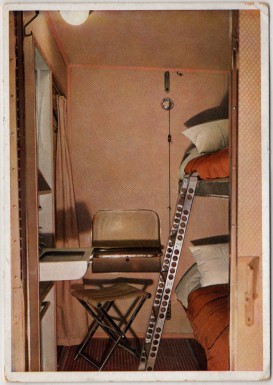 Passenger Cabin aboard Hindenburg (Airships.net collection) Hindenburg was
originally built with 25 double-berthed cabins at the center of A Deck,
accommodating 50 passengers. After the ship’s inaugural 1936 season, 9
more cabins were added to B Deck, accommodating an additional 20
passengers. The A Deck cabins were small, but were comparable to
railroad sleeper compartments of the day. The cabins measured
approximately 78″ x 66″, and the walls and doors were made of a thin
layer of lightweight foam covered by fabric. Cabins were decorated in
one of three color schemes — either light blue, grey, or beige — and
each A Deck cabin had one lower berth which was fixed in place, and one
upper berth which could be folded against the wall during the day.
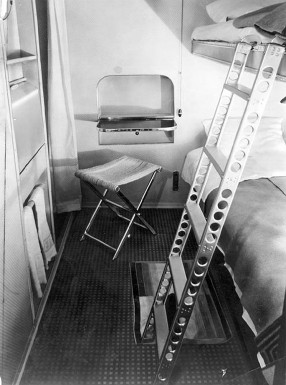 Passenger Cabin aboard Hindenburg (Airships.net collection) Each cabin had call buttons to summon a steward or stewardess, a
small fold-down desk, a wash basin made of lightweight white plastic
with taps for hot and cold running water, and a small closet covered
with a curtain in which a limited number of suits or dresses could be
hung; other clothes had to be kept in their suitcases, which could be
stowed under the lower berth. None of the cabins had toilet facilities;
male and female toilets were available on B Deck below, as was a single
shower, which provided a weak stream of water “more like that from a
seltzer bottle” than a shower, according to Charles Rosendahl. Because
the A Deck cabins were located in the center of the ship they had no
windows, which was a feature missed by passengers who had traveled on
Graf Zeppelin and had enjoyed the view of the passing scenery from their
berths.
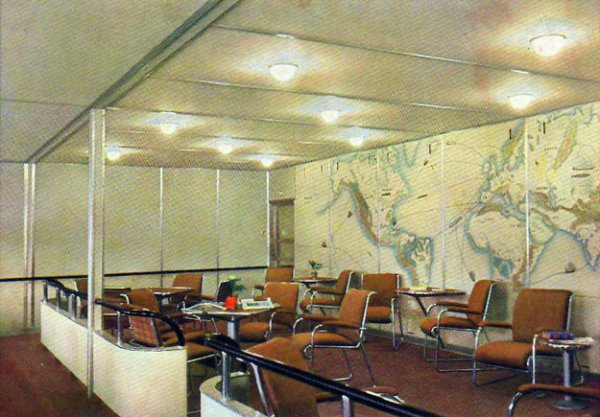
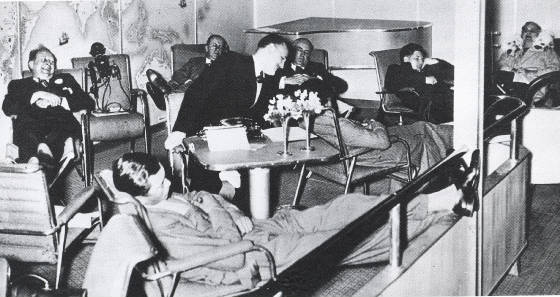

|
 |
|
|
|
 |
|
| CLICK TO ENLARGE ART |

|
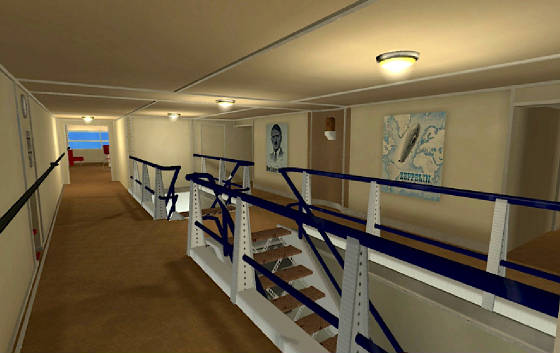
|
| INTERIOR OF THE HINDENBURG |

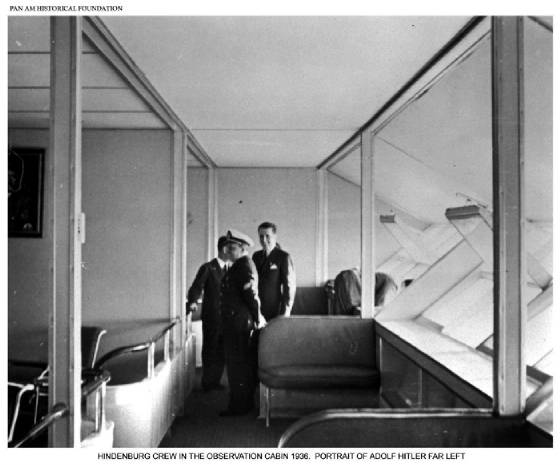
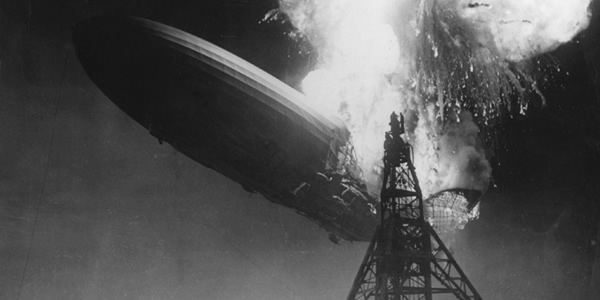
|
| LAKEHURST, New Jersey 1937 |
During the winter of 1936-1937, while the ship was laid up in
Frankfurt, additional passenger cabins were also added in Bay 11, just
aft of ring 173. The new cabins had windows offering an outside view,
and were slightly larger than the cabins on A Deck. The additional
weight of these new cabins was made possible by the unexpected (and
unwelcome) need to operate the ship with hydrogen, which has greater
lifting power than the helium for which Hindenburg had been designed.
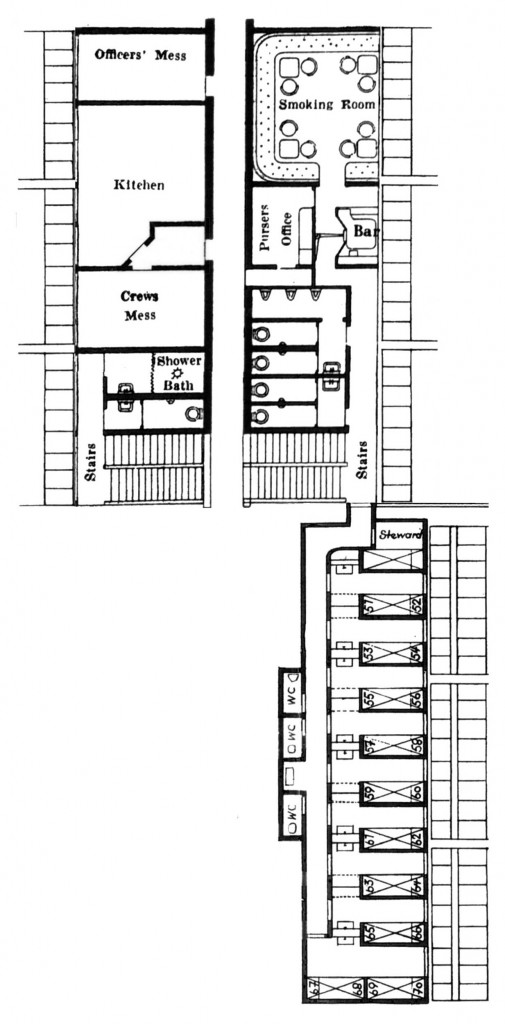 B Deck, showing 1937 cabins. (Drawing courtesy Patrick Russell, “Faces of
the Hindenburg” blog, based on 1937 DZR brocure.)
The Bar
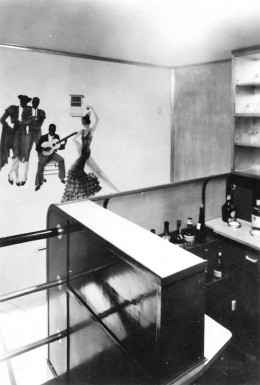 Hindenburg Bar (LZ Archiv) The Hindenburg’s bar was a small ante-room between the smoking room
and the air-lock door leading to the corridor on B-Deck. This is where
Hindenburg bartender Max Schulze served up LZ-129 Frosted Cocktails (gin
and orange juice) and Maybach 12 cocktails (recipe lost to history),
but more importantly, it is where Schulze monitored the air-lock to
ensure that no-one left the smoking room with burning cigarattes,
cigars, or pipes. Schulze had been a steward and bartender aboard the
ocean liners of the Hamburg-Amerika Line and was well liked by
Hindenburg passengers, even if he was surprisingly unfamiliar with basic
American cocktails such as the Manhattan. The bar and smoking room were
also the scene of a raucous party on the Hindenburg’s maiden voyage to America, where passenger Pauline Charteris improvised
aKirschwasser cocktailafter the ship ran out of gin for martinis.
|
 |
|
|
|
